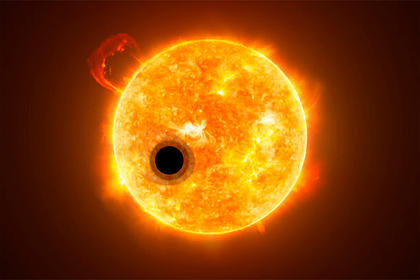
Astronomers at the University of Montreal in Canada have found that the mass of the giant planet WASP-107b's core is less than the mass that was considered necessary to form a huge shell of gas, such as that of Jupiter and Saturn. The discovery, which is changing the idea of the appearance of giant planets, is reported in an article published in the Astronomical Journal.
WASP-107b was first discovered in 2017 around the star WASP-107, located 212 light years from Earth. The planet is located very close to the parent luminary – 16 times closer than the Earth to the Sun. In size, WASP-107b is comparable to Jupiter, but 10 times lighter. It belongs to the so-called type of super-puffs (super-puffs) – planets with a density so low that it is comparable to the density of cotton candy.
The researchers analyzed the wobbling of the star caused by the planet's rotation to determine the mass of WASP-107b and its internal structure. With such a low density, the planet should have a solid core that is no more than four times the mass of the Earth. Jupiter and Saturn have a core ten times more massive than Earth.
According to scientists, WASP-107b formed far from the star, where the gas in the protoplanetary disk is cold enough for accretion to occur quickly. Later, the planet moved into an orbit closer to the star.

